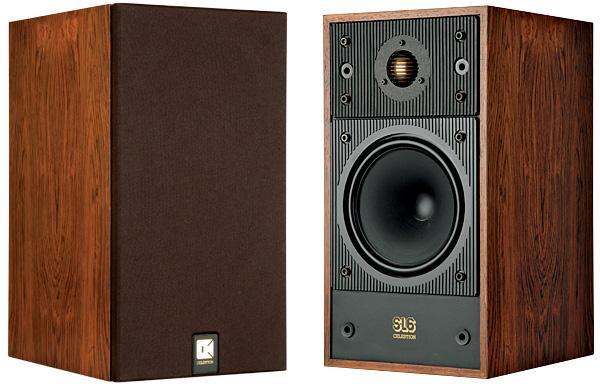Celestion SL6

Launched at the Harrogate Hi-Fi Show in 1981, the Celestion SL6 looked different, and it was more different than it looked. In essence, its all-new drive units had been designed with the help of Celestion’s then-unique and revolutionary laser-based vibration analysis measurement system. It was the first British speaker to use a metal-dome tweeter, but the bass unit was equally innovative.
The laser analysis system used could scan the surface of a driver diaphragm, and produce still or animated images to show how the diaphragm was actually behaving. It was now easy to see whether it was vibrating evenly in response to an input signal, or whether it was ‘breaking up’, with different parts of the surface going their own way.
This made it possible to produce drivers that behaved in true pistonic fashion within their operating ranges, and to eliminate problems caused by some constructional aspects in conventional cone drive units. For example, the usual glued-on dustcap was found to cause breakup modes, as did the usual type of bonded surround.
So in the SL6’s bass unit, the dustcap was dispensed with and the concave centre was made as part of the 165mm ‘vinyl homopolymer’ cone. The surround was made of compatible material and welded to the cone, with almost no increase of thickness at the joint. Attention was also paid to the effects of the leadout wires from the voice-coil.
In Celestion’s metal-dome tweeter, the curved diaphragm and voice-coil former were made in one piece, the coil former being a cylindrical continuation of the domed top. Copper was chosen mainly for good heat dissipation. This moving element was made by electroforming, and was only 32 microns thick, but even so its mass was such that the upper resonance was only just above 20kHz. A notch filter was added to remove this resonant peak from the response, and in production each filter was individually tweaked to the correct frequency for that specific tweeter.
For the cabinet, the team wanted the enclosure to be as rigid and light as possible. Rejecting Aerolam as too expensive, the SL6 was clothed in a sealed-box cabinet instead. This was made of 19mm veneered particle board, strengthened by internal fillets at the corners and with damping material on all the panels. Inside was a loose filling of BAF wadding.
Air and Depth
Spinning up Jazz At The Pawnshop [Proprius PRSACD7879], the SL6 gave a great first impression, conjuring up the sound of the expectant audience with fine space and well-layered depth. Bass was tidy, though it didn’t really have a satisfying sense of freedom. Although the double-bass sound was even and free from boom, effort was needed if you wanted to follow the bass line. In the midrange, there was a feeling of a warm coloration which could sound like a thickening of the sound. Yet the treble was sweet and nicely detailed. It could give a good tactile sense on the attack of vibes notes, for example, and cymbal sounds were good too.
Female vocals generally were well handled. Ana Caram’s rendition of ‘Blue Bossa,’ collected on Jazz Latinas [Chesky JD290] played charmingly, although you could start to feel that everything was too polite. Yet when it came to the luscious-voiced Rosa Passos, singing and playing ‘Garota de Ipanema’ with Ron Carter on bass later in the same Chesky sampler, things didn’t quite gel. There wasn’t anything ‘It conjured up the sound of the expectant audience with fine space and depth’ overtly wrong about the bass, yet the sound didn’t hang together.
With a blast of Baroque from the Archiv box set of Bach concertos by Trevor Pinnock and The English Concert [Archiv 463 725-2], it was hard to fault the SL6. It wasn’t fazed by the concertos for harpsichords, retaining good clarity and openness.
Verdict
Still admirable in so many ways, the SL6 still seems a slightly strange compromise, not free from coloration and lacking bass extension and ‘oomph’. You feel that inside this 12-litre box is an excellent speaker trying to get out. Maybe not one for rockers, but it can still make a nice sound.
Originally published in the Yearbook 2011

























































